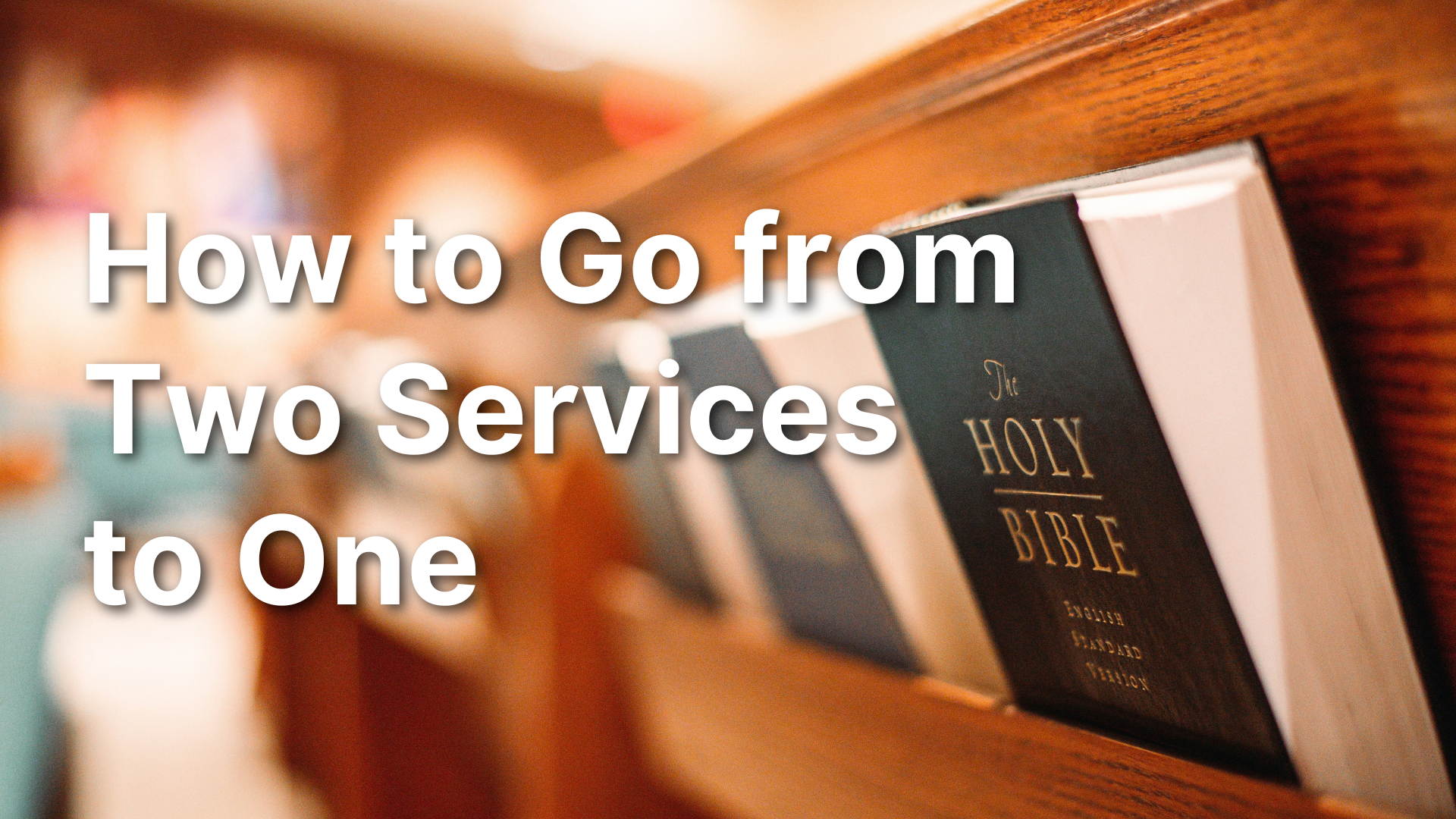5 Obstacles For Moving Your Church to Two Services
Photo by Keagan Henman on Unsplash
Moving to two services is a huge transition and shouldn’t be taken lightly. But your new growth with new challenges is a good thing! It means you’re reaching new people, and you need to make room for more. Going through this transition myself and consulting with other pastors, I’ve learned going from one service to two is significant. Your structure and approach to ministry must change. I would liken it to a kid hitting puberty. Everything is new, nothing works, and you don’t know what’s going on anymore.
But A good plan and awareness of the challenges can make the transition smooth. This allows you to reach twice as many people for Christ.
1. The biggest objection
The biggest and most obvious change in going from one service to two is the structure of your ministry. Instead of everyone getting together at 10:30, now the congregation will be split. It will be possible that people will go to the same church for years and never meet.
And this brings me to the biggest objection I hear from congregants. They argue that you will lose the family feel because you won’t know everyone at the church anymore. While that is true to an extent, there are limits.
Unless your main auditorium seats 50 people or less, the likelihood of someone knowing everyone in your church is slim. We just don’t have the relational capacity to maintain a relationship with everyone. As your congregation’s social circle grows, the ability for everyone to know everyone diminishes.
For example, I’ve served at two churches with around 100 people. I knew the names of just about everyone, who their kids are, and what they do for work. But when I served at a church of 400, I only knew the parents with elementary age kids and younger. I was aware of others, but I didn’t have much relationship with them. Similarly, when I served at a church of 1500, if you didn’t have elementary kids there was a good chance I didn’t know who you were.
My point is that at church, we create a social circle of 5-20 people that we look for each week. Once a church goes to two services, that social circle will all go to the same service. You'll keep the family feel because they will still see the same people they always see.
2. The right amount of volunteers
Going to two services can be a scary thought because it can feel like twice the amount of work. And in some respects, it is. If you’re already struggling to keep all your volunteer positions filled, then the idea of literally doubling the volunteer need can be terrifying.
But there are some strategies to help you fill all the positions.
First, you may not need the same number of volunteers in each service. When I was at the church of 1500 and did four services a week, each service had a different average attendance. Because each service had different attendance, I needed a different number of volunteers.
Knowing how big each service is going to be, especially if you’ve never done it before can be tough. A good rule of thumb though is to assume your later service will be bigger than the early service. The only exception is if your church decides to do a contemporary service first and then a classic service. More families with kids will likely go to the earlier, contemporary service.
Second, your volunteers can serve more often. Right now, most of your volunteers only serve once a month. If you’re doing one service, this is fine. However, when you move to two services, you can challenge your volunteers to work one, worship one. They can serve far more often and not miss service at all.
When I moved from one service to two, I challenged all my volunteers to serve twice a month instead of once. Many agreed and alleviated a lot of my problems. I encourage you to make the same request.
I talk more about building your volunteer structure for growth in the post below.
3. Should kidmin be offered in both services?
Answering this question depends on the culture of your church and the goals of going to two services. Many churches went to two services 30 years ago to appease church goers who didn’t like the worship-style changes. The worship wars were wild. While most of my examples are old, I still see churches do this.
The most successful two-service model is where both services are the same. They offer the same music, same preaching, same time duration, and the same ministries. If you choose to offer kidmin only once, you’re asking all your young families to ignore the other one. Unless your church is full of empty nesters, the services will be horribly be unbalanced.
Getting people to attend an early service is hard enough. But if you choose to not offer kidmin you're making the challenge that much harder. Make your life easier and offer two identical services.
4. Find the right times
I was talking to a senior pastor who recently made the leap to two services. He said the best thing to do is to change both start times.
If your one service structure starts at 10:45 and you have plenty of time to do another service before, don’t. Change that 10:45 service start to 10:30 or 11. Your people are in rhythm of coming to church at a certain time. If you add a second service but then keep the other service the same, they will keep doing what they’ve always done. By changing the times, you’re forcing them to decide.
When you’re looking for the best start times, you need to look at two factors. The first is how long do you want your services to be? If you’ve had one service without a hard end, then that service may be running long because it can. But you can’t do that with two services. The first service has to end at a reasonable time. As I said before, it’s best to have two identical services, so pick two times that will fit your congregation best.
Second, you need to consider how long it will take to transition from first to second service. Your parking lot is probably already stressed because of the growth. Can it take double the number of cars? If not, you need to allow time for it to empty before the next group comes. Similarly, just because first service ends at 10:15 not everyone will leave. You want them to stay for a while to build community and serve. If your lobby isn’t big enough for more people then you need to allow more time for first service to clear out.
I think allowing 20-40 minutes between services is best with 30 minutes being goldilocks. This is why you see so many churches with services at 9 and 11. It gives them space to run over if needed and allows the everything to turn over before the next service begins.
5. What about Sunday School?
The tricky part of choosing two service times is what to do with Sunday School. If you hold those classes the hour before service, does the first service replace it? Do you offer two Sunday School hours held before? Do you have one in between? Do you get rid of them all together? It’s a tough call that you and your leadership team will have to decide.
The church I grew up in switched to two services back in the 90s. Sunday School was strong and still is to this day. They decided to put first service at 8:30 with Sunday School starting at 10 and second service at 11. This Sunday School sandwich works well for them.
I’ve seen other churches offer Sunday School or Small groups at the same time as their main service. And others move away from Sunday School hour completely in favor of groups. Switching from Sunday School to Small Groups was tough at the church where we added a second service. But ultimately, it helped us to grow smaller as we grew bigger. Because we weren’t confined to traditional times and places, we were able to have more groups. This resulted in more people connected than ever before.
Moving to two services can be scary. There are a lot more factors to consider, but I’ve covered some of the biggest obstacles. Don’t go into this process lightly and make sure that your church actually needs this. I’ve seen too many churches make the jump only to revert later because they weren’t growing like they thought. If you’re growing and your facility is 80% full, then it’s time to restructure. If not, then sit tight, pray, and continue to reach your community. Jesus said those who are faithful with little will be trusted with much. Luke 16:10












A few weeks ago, I talked about how to set up Planning Center Services. You can see that post here. But once you get Services all set up, how do you use it week in and week out? How do you handle volunteer declines? How do you communicate with them what you’re doing in service, and how can they be prepared?
In this post, I’ll answer all those questions.